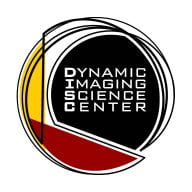
This collaboration began with shared goal to leverage a new MRI platform to better assess bone regeneration and remodeling around metallic implants. The team will be conducting and comparing MRI scans at 0.55T with scans performed at 3T of soft-tissue areas immediately adjacent to orthopaedic metallic implants, an area that is “invisible” to current imaging techniques. According to Dr. Hargreaves, “This is the first NIH-funded project to my knowledge that aims to optimize imaging on the high-performance lowfield system, as well as the first project that compares very different field strengths (0.55T and 3.0T).”
The team aims to gain better understanding of the physics trade-offs as well as the benefits of different field strengths in evaluating specific clinical questions. Utilizing the strengths of low field MR, specifically as it pertains to reduction of metallic artifacts, will allow for direct benefits in clinical practice for patients with metallic hardware. The objective is to be able to see human soft tissue very close to metallic implants as this is where implants often fail. Increasing knowledge about how implants bond/attach to normal tissue will then inform the next generation of implants that may work more seamlessly with the human body and potentially last much longer.
Metal implants have been a major problem for the prevailing MRI trend towards higher field strengths. The artifacts caused by metal makes imaging more complicated and often lengthens scan time by an order of magnitude. Believing this project both provides an excellent application for low-field MRI technology and addresses an important public health need, Dr. Nayak explains, “We increasingly rely on orthopedic implants to live longer, healthier and more active lives. We therefore need to take care of these implants, minimize the chance of complications, and help them last longer.” Dr. Buser is hopeful the technology will be successful, will allow for a widespread application of high-resolution low field MRI, and will have an immediate clinical impact. She explains, “It will help us understand changes within the remodeling bone. Furthermore, we will be able to assess various patient comorbidities and risk factors, analyze the changes within bone structure/metal surface and how they relate to overall treatment success.”
Dr. Acharya, who faces challenges in image evaluation of patients with metallic hardware, specifically in the spine, shares, “With our strong team of scientists, I hope we can demonstrate the clinical value of this system and apply it to day-to-day imaging of these patients. The collaboration will be successful as each of us has a unique perspective of the project, yet in the end we are striving for common goals.” Explaining the breadth of the team, Dr. Nayak shares, “We have engineers that specialize in metal implant MRI, engineers that specialize in the physics of low-field MRI, clinicians that specialize in orthopedic surgery, and radiologists. That diversity of perspectives is one of our biggest strengths.”
Team Members
Krishna Nayak, PhD
Professor of Electrical and Computer Engineering, Biomedical Engineering, and Radiology
Dr. Nayak is an expert with MRI physics at low field strengths like 0.55 Tesla.
Brian Hargreaves, PhD
Professor of Radiology, Stanford University
Dr. Hargreaves has worked on the physics of MRI near metallic implants for more than 10 years and has developed many methods to correct them. He has deployed methods for clinical evaluation and collaborated with others in this field.
Zorica Buser, PhD
Director of Research and Director of Regenerative Medicine, Gerling Institute
Research Assistant Professor, Department of Orthopedic Surgery, Grossman School of Medicine
Dr. Buser has worked in the field of spine orthopaedics for the past 19 years. Her research focuses on both basic science and clinical research in the field of spinal pathologies, surgical treatments, in particular spine fusion and osteobiologics, outcomes, and disc regeneration.
Jay Acharya, MD
Associate Chief of Neuroradiology, Assistant Professor of Clinical Radiology, and Director of Spine Imaging and Intervention, Keck School of Medicine of USC
Dr. Acharya is a neuroradiologist with a specific interest in spine imaging. On a daily basis, he reviews imaging of patients with spinal hardware and hopes to contribute solutions to the clinciallly relevant imaging evaluation component to the team.
